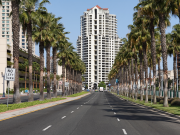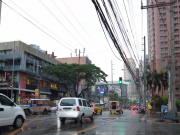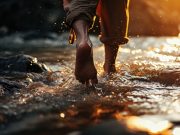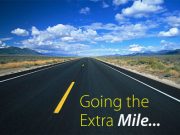I. Introduction
The Growing Retirement Tourism Market in the Philippines
The Philippines has recently become a favored global retirement tourism map destination. With its tropical climate, friendly locals, low cost of living, and beautiful landscapes, it’s no wonder that more and more retirees are choosing to spend their golden years in this Southeast Asian archipelago. According to the Philippine Retirement Authority, there was an impressive 11.75% increase in foreign retirees in 2019, with numbers expected to grow yearly.
The Importance of Real Estate in Retirement Tourism
One of the main factors driving the appeal of the Philippines as a retirement destination is the country’s real estate market. The availability and affordability of high-quality residential properties play a crucial role in attracting retirees. Whether they’re looking for a beachfront villa, a condominium in a bustling city, or a quiet house in the countryside, the diverse real estate options in the Philippines cater to a wide range of preferences.
Moreover, real estate investment is a significant economic contributor, providing a steady income stream for local communities and boosting the national economy. It is not just about providing a roof over someone’s head; it’s about creating a lifestyle that retirees aspire to have.
In the following sections, we will delve deeper into the role of real estate in Philippine retirement tourism, discussing current trends, government policies, challenges, opportunities, and future predictions. We aim to comprehensively understand this booming market for potential investors, retirees, and anyone interested in retirement tourism and real estate dynamics.
II. Background and Current Situation
A. Overview of the Philippine Real Estate Market
The real estate industry is a vital driver of the Philippine economy, generating gross value added of about 536 billion Philippine pesos in 2022. The market has shown remarkable resilience, steadily recovering from the impacts of the pandemic and global economic uncertainties.
Residential property, in particular, continues to perform exceptionally well, with rents across Metro Manila rising by a modest 3.9% in 2022, following a cumulative 12% decline in the past two years. Furthermore, Makati CBD property prices have significantly increased by almost 132%, making it an attractive investment proposition.
The future of the real estate market in the Philippines looks promising. 2023 will deliver 5,600 condominium units in Metro Manila’s central districts. Factors such as the rise of hybrid workplaces are predicted to keep both commercial and residential properties strong.
B. Trends in Retirement Tourism Globally and in the Philippines
Retirement tourism, the practice of retirees relocating to a different country to enjoy their retirement years, has been growing globally. The Philippines has carved out a niche in this sector, recording an 11.75% increase in foreign retirees in 2019.
The country’s tropical climate, friendly locals, affordable cost of living, and diverse landscapes make it a popular choice for retirees looking to change scenery in their golden years. Moreover, the availability of high-quality residential properties at affordable prices boosts the appeal of the Philippines as a retirement destination.
C. The Appeal of the Philippines as a Retirement Destination
The Philippines offers a unique blend of natural beauty, warm hospitality, and vibrant culture, making it an ideal retirement destination. Its diverse landscapes, ranging from pristine beaches to lush mountains, provide various lifestyle options for retirees.
The country’s lower cost of living than many Western countries is another significant factor. This affordability extends to the real estate market, offering retirees the opportunity to own or rent high-quality residential properties at a fraction of the cost they would incur in their home countries.
Furthermore, the Philippines has a large English-speaking population, making it easier for foreign retirees to communicate and integrate with the local community. The country also offers excellent healthcare facilities, modern amenities, and a relaxed lifestyle, all contributing to its appeal as a retirement destination.
III. Why Real Estate is Crucial in Philippine Retirement Tourism
A. The Impact of Real Estate on Retirement Decisions
The choice of a retirement destination is often influenced by the availability and affordability of suitable residential properties. The real estate market in the Philippines offers diverse options catering to various lifestyle preferences and budgets.
Real estate plays a significant role in ensuring a comfortable and enjoyable retirement. It provides a living space and a home where retirees can enjoy their golden years. The quality, location, and cost of real estate can significantly impact the quality of life in retirement, influencing decisions on where to retire.
Moreover, owning property in the Philippines can be a sound investment. With the steady growth of the real estate market, properties can appreciate over time, providing a potential return on investment.
B. Types of Real Estate Preferred by Retirees
Different kinds of real estate attract retirees based on their lifestyle preferences. Some prefer condominiums in urban areas, close to amenities like shopping malls, restaurants, and healthcare facilities. Others are attracted to beachfront properties or houses in the countryside, offering tranquility and a more intimate connection to nature.
In the Philippines, popular choices among retirees include gated communities, which offer security and a sense of community, and resort-style developments, which provide recreational amenities like swimming pools, golf courses, and clubhouses.
C. Case Studies of Successful Real Estate Developments Catering to Retirees
Several real estate developments in the Philippines have successfully catered to the retirement market. For instance, residential properties in Tagaytay Highlands, a mountain resort and mixed-use development, offer a cool climate, panoramic views, and a range of leisure amenities, attracting many retirees.
Another successful example is Makati City, where many retirees are drawn to its convenient location close to shopping centers, health facilities, and commercial districts. The city also offers easy access to Manila’s international airport and public transportation.
These case studies highlight the potential for real estate developments that cater specifically to the retirement market, providing residential properties and a complete lifestyle package.
IV. Government Policies Affecting Real Estate and Retirement Tourism
A. Overview of the Philippine Retirement Authority’s Role and Policies
The Philippine Retirement Authority (PRA) significantly promotes the Philippines as an ideal retirement haven. Established by Executive Order, the PRA is a government-owned and controlled corporation mandated to accelerate the social and economic development of the country.
One of the critical initiatives of the PRA is the Special Resident Retiree’s Visa (SRRV), which allows for an indefinite stay in the Philippines with free entry and exit. The PRA also assists retirees in securing necessary government documents, such as driver’s licenses and National Bureau of Investigation (NBI) Clearance.
In the real estate sector, the PRA provides adequate supervision, regulation, and control in developing and establishing retirement communities in the country. These policies have been instrumental in making the Philippines an attractive destination for retirees globally.
B. How Government Policies Influence the Real Estate Market
Government policies significantly influence the real estate market in the Philippines. Policies promoting foreign investment, for instance, attract overseas buyers and investors to the property market.
Furthermore, the government’s infrastructure projects, such as the “Build, Build, Build” program, improve accessibility and connectivity, thereby increasing the value of properties in areas near these developments.
In addition, tax incentives and streamlined processes for real estate transactions also contribute to the dynamism and growth of the property market.
C. Impact of These Policies on Retirement Tourism
Government policies that promote real estate development and investment directly impact retirement tourism. The availability of diverse and high-quality residential properties, made possible by these policies, attracts retirees to the Philippines.
The SRRV, in particular, makes it easier for foreign retirees to reside in the Philippines indefinitely, making the country a more attractive retirement destination. Furthermore, the assistance provided by the PRA in securing necessary documents simplifies the relocation process for retirees.
In conclusion, the Philippine government’s policies are crucial in promoting the real estate market and retirement tourism. As the government continues to implement strategies to attract foreign retirees, the future of retirement tourism and the real estate market in the Philippines looks promising.
V. Challenges and Opportunities in Real Estate for Retirement Tourism
A. Challenges Faced by the Real Estate Sector in Meeting Retiree Demands
Despite the potential, the real estate sector catering to retirement tourism in the Philippines faces several challenges. One of the significant challenges is addressing the diverse demands of retirees. A wide range of property options is necessary as they have varying preferences concerning location, property type, and amenities.
Another challenge lies in the legal limitations on foreign land ownership in the Philippines. While foreigners can own condominium units, they are prohibited from owning land, which could deter some retirees.
Infrastructure is another area of concern. Despite the government’s “Build, Build, Build” program improving infrastructure, specific areas, mainly rural and remote regions, still lack access to essential services and amenities.
Finally, ensuring the safety and security of retirees is crucial. This includes physical safety and financial security, such as protecting retirees from fraudulent real estate transactions.
B. Opportunities for Growth and Investment in this Sector
Despite these challenges, the real estate sector catering to retirement tourism in the Philippines presents significant opportunities. The increasing number of foreign retirees provides a growing market for residential properties.
The demand for retirement communities offering a complete package of residential properties, amenities, and services is rising. Developers who can provide such integrated solutions stand to gain in this market.
Furthermore, the legal limitations on land ownership present an opportunity for innovative solutions, such as long-term leases and partnerships with local landowners. These alternatives allow foreign retirees to enjoy the benefits of property ownership—additionally, the ongoing improvements in infrastructure open up new areas for real estate development. As accessibility improves, previously underdeveloped areas can become attractive retirement destinations.
VI. Future Trends and Predictions
A. Emerging Trends in Retirement Tourism and Their Impact on Real Estate
Retirement tourism continuously evolves, driven by demographic changes, technological advancements, and changing retiree preferences. These emerging trends have significant implications for the real estate market.
One trend is the increasing desire of retirees to participate in new and adventurous activities. This preference for active lifestyles may influence demand for properties close to recreational facilities or outdoor attractions.
Another trend is the shift toward holistic wellness in retirement plans. This has increased demand for properties offering wellness amenities, such as fitness centers, spa facilities, and health care services.
Furthermore, longer life expectancy, inflation, inadequate pension plans, and rising healthcare costs influence retirees’ financial decisions, including their real estate investments.
Technological advancements are also reshaping retirement tourism. Digital platforms make it easier for retirees to explore property options, conduct transactions, and manage their properties remotely.
B. Predictions for the Future of the Real Estate Market in Retirement Tourism
Looking ahead, several predictions can be made for the future of the real estate market in retirement tourism.
First and foremost, we anticipate a growth in demand for diverse property options driven by retirees’ varied lifestyle preferences. This includes everything from urban condominiums to beachfront properties and countryside homes.
Secondly, the trend towards wellness and active lifestyles suggests that developments offering a range of recreational and health-related amenities will be increasingly popular.
Thirdly, with the increasing use of technology, digital platforms will play an ever more significant role in the real estate market. This includes virtual tours, online transactions, and property management apps.
VII. Conclusion
A. Recap of the Role of Real Estate in Philippine Retirement Tourism
The real estate sector is pivotal in shaping retirement tourism in the Philippines. From providing a variety of residential options that cater to diverse retiree preferences to being influenced by government policies like those implemented by the Philippine Retirement Authority, real estate is at the heart of this growing industry. Despite facing challenges such as legal limitations on foreign land ownership and infrastructure concerns, the sector offers attractive opportunities for growth and investment.
B. Final Thoughts on the Future of This Booming Market
Looking forward, the future of the real estate market in retirement tourism in the Philippines appears promising. Emerging trends such as a shift towards active lifestyles and holistic wellness among retirees and technological advancements are set to shape the market. These developments and the increasing demand for diverse property options suggest a vibrant and dynamic future for real estate in retirement tourism.
As we navigate these exciting times, developers, investors, and policymakers must stay attuned to these trends and adapt accordingly. By doing so, they can contribute to the continued growth and success of the Philippine real estate market and retirement tourism industry, creating a win-win situation for all stakeholders involved.
In conclusion, while the journey may be challenging, the potential rewards make it worthwhile. As we continue to explore and understand this booming market, one thing is clear: the real estate sector will remain a key player in Philippine retirement tourism for years to come.

























